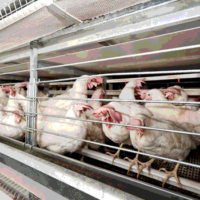We’ve seen it all before. Empty grocery shelves. Frightening headlines. Ambiguous status updates. And the lingering consumer fear factor. Such is the nature of a food recall. It seems like every day there is a new food recall. Between 2013 and 2018, food recalls have increased over 10 percent, and they are not just impacting the usual suspects like beef and poultry. Herbal teas, spices, and fresh vegetables have all been recalled in the last few weeks due to a variety of health concerns, ranging from Salmonella to Listeria to even lead contamination.
Even more disturbing than the sheer pervasiveness of product recalls are the equally pervasive difficulties the industry seems to have with identifying and isolating the source of contamination. This results in costly, drawn-out recalls, as companies must overestimate and pull every product from store shelves to prevent the risk of missing a compromised batch. The rising tide of product recalls not only threatens consumers health and safety, but also damages brand equity in the following months.
Take the 2018 romaine lettuce recall, for instance. Although it’s been nearly a year since red- and green- lettuce was recalled after water on the California-based company’s farm tested positive for Escherichia coli, U.S. consumers still vividly remember stores, restaurants, and homes rushing to dispose of their contaminated greens. Even in 2012, before food recalls became daily news, research indicated that 55 percent of consumers would switch brands following a recall, and 15 percent would never again purchase the affected product—even after the recall was resolved.
As the rate of recalls continues to rise, companies are charged with answering a number of important questions: What has led to the increasing rate and scale of food recalls? What can manufacturers do to prevent the prolific rates of recalls from continuing? And in the event of a recall, how can food producers speed the time to resolution?
Longer, More Complex Supply Chains
It wasn’t long ago that the pathway from farm to table was much shorter, with the majority of food originating in relatively close proximity to where it was sold and consumed. Today, that is no longer the case. Instead, consumers increasingly prefer a wide variety of adventurous food products, often impossibilities in local growing conditions. In fact, “the adventurous consumer” was crowned the top trend in 2018 in the market. Additionally, consumers want ready-to-eat-meals and out-of-season foods year-round, challenging the food supply chain to keep foods accessible, fresh, and safe longer than ever before.
Such consumer demands have led to longer, more complex food supply chains. With more steps in the process, there are inherently more opportunities for errors. Every instance a food product is handled represents an opportunity for contamination—whether it be products rising above safe handling temperatures, cross-contamination, or the introduction of a potential allergen. On top of it all, food manufacturers are also handling a greater volume of products than ever before. Together, the lengthening supply chain and growing volume of products represents a perfect storm for product recalls.
Fewer, Generalist Manufacturers.jpg)
While in the past, the supply chain was marked by a large number of specialized food producers, today’s global food landscape has resulted in fewer, larger manufacturers. Inherent to a more concentrated and generalist supply chain is a more pervasive problem in the event of a compromise. For instance, as a direct result of the romaine lettuce outbreak at the end of 2018, cauliflower and some additional lettuce products also needed to be recalled due to potential cross-contamination during production.
With a greater variety of food also comes a greater variety of data. Larger, heterogeneous manufacturers naturally make it harder to isolate contaminated products. Even after a contaminated product is identified, experts often struggle to pinpoint the origin of the problem, whether it be at the farm, the distribution facility, or the grocery store—or any stop in between. Integral to these experts’ analyses is the ability to track each product both individually and collectively, and therefore make intelligent associations that support greater isolation and resolution. Unfortunately, the lion’s share of manufacturers lack access to this kind of data, which are key to minimizing damage to public health, brand image, and the bottom line.
The Need for Better Detection
The increase in recalls is due, in large part, to regulatory agencies more successfully identifying and notifying the public of contaminated products. In fact, the first decrease in U.S. Food and Drug Administration food recall detection since 2015 occurred during Q1 2019, not due to an improvement in recall prevention but rather, due to reduced oversight and safety inspections during the government shutdown. This reality highlights the growing adoption and effectiveness of advanced supply chain security and traceability technology by government agencies, which makes recalls easier to spot and the public easier to notify.
But while regulatory bodies have successfully harnessed technological breakthrough to notify the public of compromised products, few manufacturers have fully adopted advanced technologies to mitigate recalls in their own environments. However, with scalable, technology-enabled traceability that spans the supply chain, manufacturers can finally take a more proactive and informed role in the product vetting and recall process.
Reversing the Rising Tide of Food Recalls
Better than more effective recall detection is the elimination of recalls altogether. While that may seem like a distant possibility in today’s context, the right technology can bring this goal within reach by empowering manufacturers to address contamination proactively by answering, "What products may have been contaminated or cross-contaminated, and should therefore be recalled?"; address contamination in the past by answering, "What was the origin of contamination in the first place?" and "At what stage of the supply chain did it occur?"; and address contamination in the future by answering, "How can we put the safeguards in place to ensure this never happens again?"
Answering these questions requires food and beverage manufacturers to adopt advanced forensic traceability solutions, such as ProLinc™ by Ashton Potter, which can seamlessly track ingredients from the field to the factory to the consumer. By integrating critical data about field and factory conditions and processes, such solutions call out potential opportunities for contamination in real time, so that food and beverage operations can rapidly isolate and eliminate compromises.
It is by taking a proactive, rather than reactive, approach to product recalls that companies can counter the rising tide of recalls to protect their brands, bottom lines, and, most importantly, consumers.
ProLinc™, by Ashton Potter, is an advanced forensic traceability solution that provides food and beverage producers comprehensive insight into food genealogy—from farm to fork. Learn more at AshtonPotter.com.




